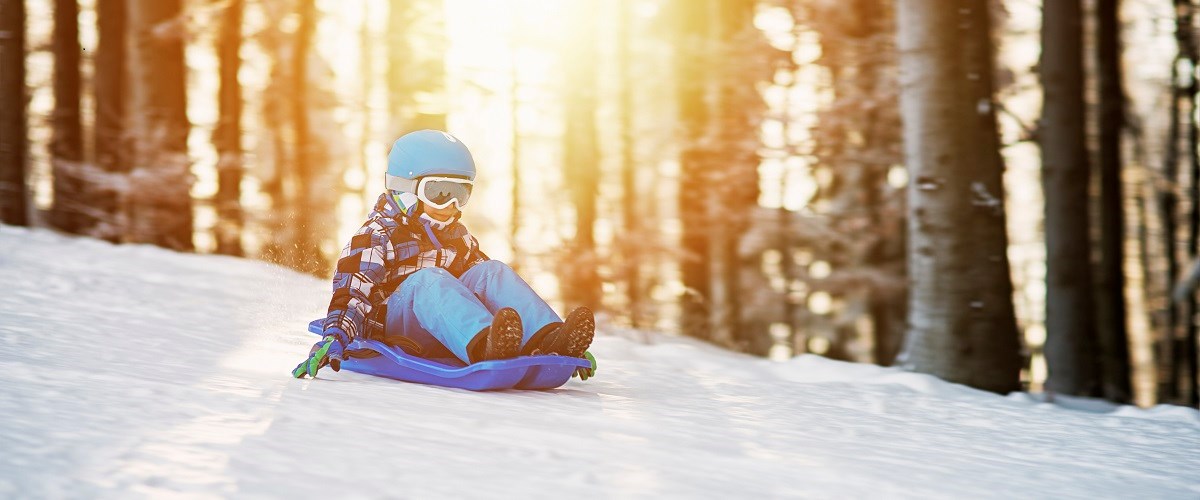Tobogganing: Balancing risky play with minimizing injuries
Summary:
SickKids Emergency Department Physician, Dr. Daniel Rosenfield, offers tips on tobogganing safety and a perspective on risky play.

Every year in our emergency department we see children injured due to tobogganing. Most injuries are relatively benign, such as sprains and other soft tissue injuries, that heal by themselves. Sometimes we see more significant injuries like fractures and rarely, we see major injuries, including impalements or traumatic brain injuries. This year due to the COVID-19 pandemic, families are excited to get outside on the hills whenever possible for activity and exercise. It is vital that during outdoor activities, such as tobogganing, COVID-19 safety measures are followed – for example, physical distancing and masking when physical distancing is not possible. Although our winter to date has been relatively mild, we have observed a significant increase in tobogganing injuries on days with substantial snowfall. Many of our colleagues across the country have noticed similar trends.
This trend likely mirrors what we saw earlier in the pandemic in the spring/summer of 2020, when we observed much higher numbers of cycling injuries compared to previous years. While it is valuable to try to minimize activities which injure children, we should also be aware that physical activities, such as tobogganing, can fit into a category called “risky play”, and can be beneficial for children.
Risky play is the idea that various physical activities that have associated risks also provide developmental, psychological and physical advantages to growing children. A growing literature base has noted that risky play is associated with positive developments in these domains, and thus has served to push back against a more risk-adverse and safety conscious western society. Tobogganing fulfills various aspects of risky play, as it involves speed, heights and uncertainty. It is also physically demanding, since children typically pull their sleds up the hills themselves.
During these challenging times, it's important for children to play outside while adhering to local public health guidelines. While we advocate for risky play, it’s important to keep in mind that there are ways to be safe while on the hills and keep injuries to a minimum.
Tips for safe tobogganing
- Wear a helmet! While there are no laws mandating this, much like skiing 20 years ago, we may look back at those not wearing helmets and wonder why we were taking this risk. A ski or hockey helmet is ideal, but even a bicycle helmet could prevent some degree of injury.
- Sleds that can be steered are likely safer than lightweight plastic sheet sleds or other types.
- Avoid hills with trees, fences, poles or other obstacles and stay clear of hills that have city streets or bodies of water (frozen or otherwise) at the end.
- Avoid wearing long scarves or loose clothing that can pose a safety risk if caught on obstacles.
- Ensure children are developmentally and physically ready for the type of sled they are using and teach children how to use their feet to brake if required.
- Children should never be towed on a toboggan by a car, ATV or other motorized vehicle.
- Toboggan on a clear day, when visibility is good.
- Always toboggan feet first.
- Children should always be supervised by an adult.
- During the pandemic, physical distancing and masking should still be maintained.

